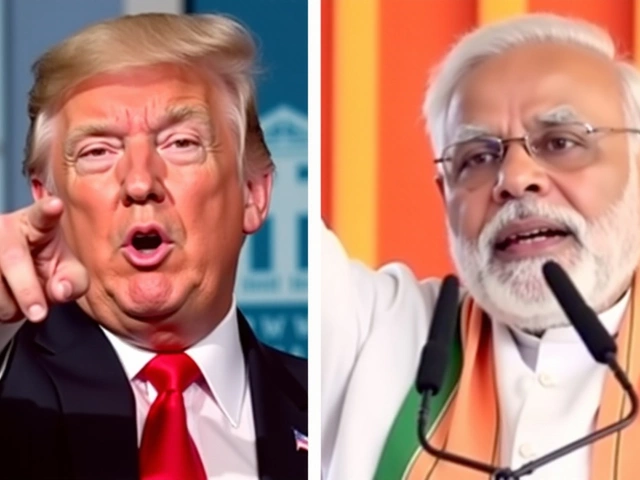On Oct 16 2025, Directorate of Revenue Intelligence (DRI) announced that 3,005 gold‑smuggling cases had been logged and 2.6 metric tons of illicit gold—worth roughly ₹3.34 billion—were seized. Most of those seizures happened at Mumbai International Airport, which accounted for 35 % of detections, followed by Chennai Airport (28 %) and Indira Gandhi International Airport in Delhi (22 %). Overland routes remain a backdoor, with Myanmar bordering accounting for about 60 % of land‑based cases. Motilal Oswal Financial Services Ltd (MOFSL) warned that the surge coincides with the pre‑Diwali rush that has driven gold prices to a record ₹128,395 per 10 grams—up 67 % since January. Gold smuggling has become a high‑stakes game, with profit margins now topping ₹1.15 million per kilogram.
Why the Spike? Record Prices and Festive Demand
The Indian cultural tradition of buying gold during Dhanteras and Diwali turns the market into a seasonal frenzy. When prices rise, the appetite for the metal doesn’t wane; instead, consumers scramble for any available ounce, even if it means paying a premium. MOFSL’s analysts note that historically, seven of the last ten Diwali seasons saw gold prices climb higher after the festival, a pattern that appears set to repeat this year.
Compounding the demand surge is the government’s July 2024 decision to cut import duties from 15 % to 6 %. While the move was intended to lower market pressure, the dramatic price rally of 2025 has re‑ignited the profit motive for smugglers. The profit gap between legal imports (subject to a 6 % duty plus 3 % sales tax) and black‑market gold has widened, making the risk‑reward calculus more enticing than ever.
Where Smugglers Are Getting Caught
Airport interceptions dominate the enforcement picture. At Mumbai International Airport, customs officers have been using advanced scanning equipment and intelligence tips to flag suspicious cargo. “We’re seeing more concealed gold in electronics and even in coffee beans,” said a senior DRI official who asked to remain unnamed.
Chennai Airport follows closely, with smugglers exploiting the city’s busy port connections to Southeast Asia. In Delhi, the sprawling Indira Gandhi International hub serves as a final gateway for shipments that arrive via sea and then shift to air for quicker distribution.
Land crossings are less visible but no less critical. The Myanmar border, especially the Moreh‑Tamu route, is a well‑trodden path for small‑scale couriers who walk gold in tightly wrapped packets. Bangladesh and Nepal corridors handle the remaining 40 % of overland cases, often using trucks that blend into legitimate trade traffic.
Profit Margins and the Economics of Illicit Gold
According to senior bullion dealer Ramesh Singh,
“The payoff is super tempting for them,” Singh told Energy News, noting that a kilogram of smuggled gold now nets more than ₹1.15 million after taxes are dodged. By comparison, the same kilogram would yield roughly ₹630,000 in profit under the old 15 % duty regime.
The average seized case weighed 0.87 kilograms, but the detection rate—estimated at 15‑25 %—suggests that the true volume swirling through the shadows could be three to four times higher. If the seized 2.6 tonnes represent just a quarter of total illicit flow, the black market could be moving upward of 10 tonnes of gold each year.
These numbers matter because they translate into ballooning cash inflows for organized crime groups, many of which are already linked to other contraband trades such as narcotics and counterfeit currency. The gold trade’s high liquidity—easily melted, stamped, and sold—makes it a favorite laundering tool for syndicates seeking clean capital.

Government Response and Enforcement Challenges
The DRI has ramped up surveillance at the three major airports, deploying canine units trained to sniff out metallic scents and expanding the use of bulk‑radiography scanners. In a recent briefing, the director of the DRI’s anti‑smuggling wing emphasized that “seasonal spikes require pre‑emptive action, not reactive sweeps.”
Nevertheless, officials admit that resources are stretched thin. With only a handful of dedicated officers per major hub, the agency relies heavily on intelligence sharing with the customs department and state police. The sheer volume of legitimate cargo—over 12 million tonnes passing through Indian ports annually—means that even a small lapse can let a kilogram slip by.
Legislators are also debating a proposal to raise punitive fines for first‑time offenders and to increase the import duty temporarily during the festive window. Critics warn that higher taxes could push the market back into the black‑market abyss, creating a vicious cycle.
What This Means for Consumers and Investors
For everyday shoppers, the immediate impact is simple: higher retail prices and longer wait times. Jewelers in Kolkata have reported that banks can’t keep up with gold‑stock demand, forcing them to source from unofficial channels at steep premiums.
Investors, on the other hand, see a double‑edged sword. While the gold‑silver ratio has narrowed to about 81‑82—making silver relatively attractive—gold’s status as a safe‑haven asset remains intact. MOFSL’s senior analyst warned that “despite the temptation of short‑term gains, the long‑term fundamentals of gold demand stay robust, especially in a culturally anchored market like India.”
The broader lesson is that policy tweaks alone won’t solve a problem rooted in tradition, price psychology, and organized crime. A coordinated approach—combining smarter enforcement, public awareness campaigns, and perhaps a temporary price stabilization mechanism—may be the only way to keep the festive sparkle from turning into a smuggling bonanza.
- 3,005 gold‑smuggling cases recorded FY 2024‑25.
- 2.6 metric tons seized, valued at ₹3.34 billion.
- Gold price peak: ₹128,395 per 10 g (67 % rise YoY).
- Top detection points: Mumbai (35 %), Chennai (28 %), Delhi (22 %).
- Overland smuggling: 60 % via Myanmar routes.
- Profit margin for smugglers: >₹1.15 million per kilogram.
Frequently Asked Questions
How does the gold‑smuggling surge affect Indian consumers?
Consumers face higher retail prices and limited stock as legitimate dealers scramble to meet Diwali demand. Some turn to unofficial sellers, paying premiums that can add up to 15 % over market rates, which erodes purchasing power during the festive season.
What triggered the recent spike in gold smuggling?
A perfect storm of record‑high gold prices, cultural buying pressure ahead of Diwali, and a reduced import duty that left a large tax gap. The price surge created lucrative margins, prompting organized crime groups to ramp up clandestine shipments.
Which airports are most targeted by smugglers?
Mumbai International Airport leads with 35 % of all detections, followed by Chennai Airport at 28 % and Delhi’s Indira Gandhi International Airport at 22 %. These hubs handle the bulk of international cargo and thus present the biggest interception opportunities.
What are the typical profit margins for smugglers?
Analysts estimate margins now exceed ₹1.15 million per kilogram, more than double the ₹630,000 margin seen after the 2024 duty cut. The tax avoidance, combined with soaring market prices, drives these figures.
What steps is the government taking to curb smuggling?
The DRI has intensified airport screening, deployed canine units, and increased inter‑agency intelligence sharing. Lawmakers are also debating higher fines and a temporary duty hike during the festive window, though critics fear such measures could push more trade underground.








